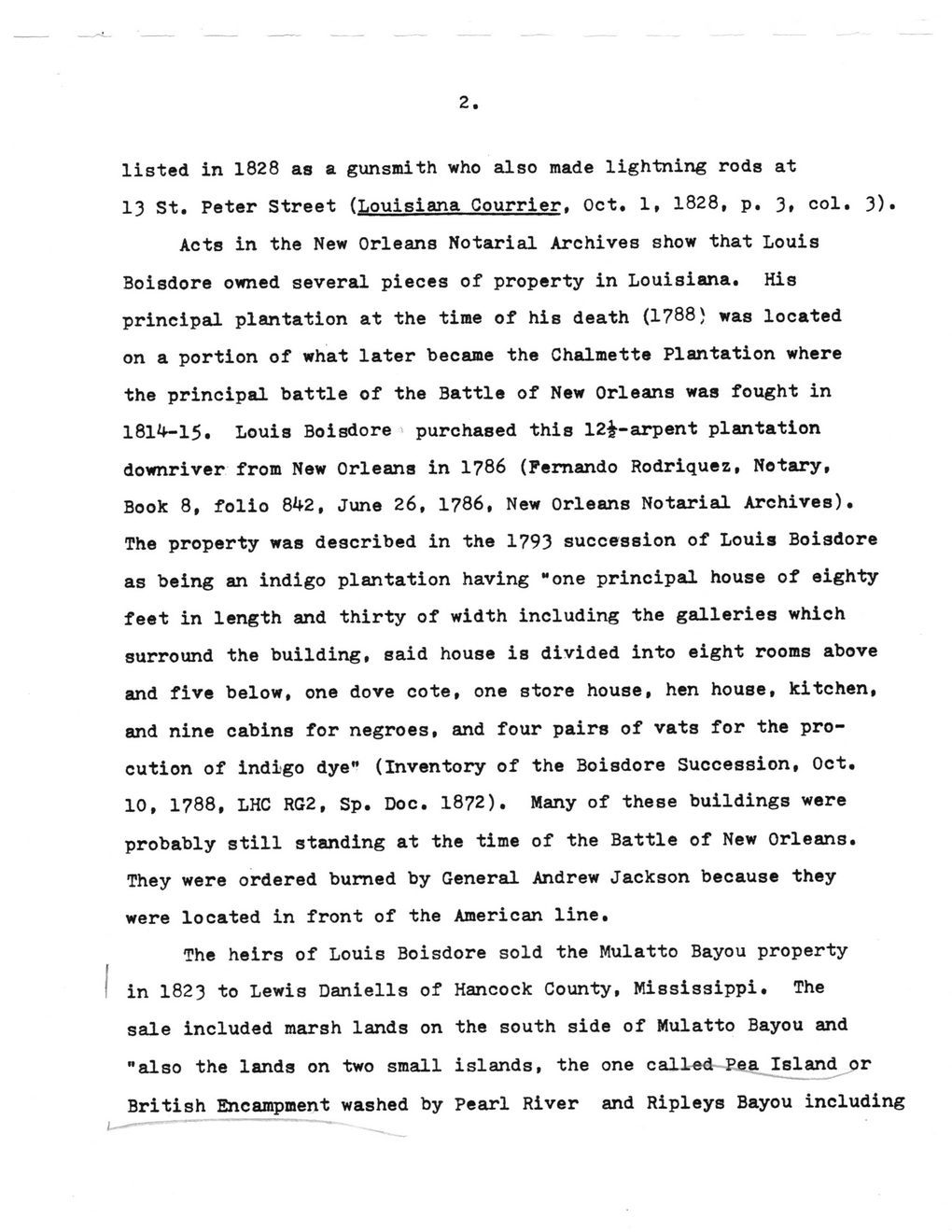This text was obtained via automated optical character recognition.
It has not been edited and may therefore contain several errors.
listed in 1828 as a gunsmith who also made lightning rods at 13 St. Peter Street (Louisiana Courrier. Oct. 1, 1828, p. 3, col. 3). Acts in the New Orleans Notarial Archives show that Louis Boisdore owned several pieces of property in Louisiana. His principal plantation at the time of his death (1788) was located on a portion of what later became the Chalmette Plantation where the principal battle of the Battle of New Orleans was fought in 181^15. Louis Boisdore purchased this 12^-arpent plantation downriver from New Orleans in 1?86 (Fernando Rodriquez, Notary, Book 8, folio 8^2, June 26, 1786, New Orleans Notarial Archives). The property was described in the 1793 succession of Louis Boisdore as being an indigo plantation having "one principal house of eighty feet in length and thirty of width including the galleries which surround the building, said house is divided into eight rooms above and five below, one dove cote, one store house, hen house, kitchen, and nine cabins for negroes, and four pairs of vats for the pro-cution of indigo dye” (Inventory of the Boisdore Succession, Oct. 10, 1788, LHC RG2, Sp. Doc. 1872). Many of these buildings were probably still standing at the time of the Battle of New Orleans. They were ordered burned by General Andrew Jackson because they were located in front of the American line. The heirs of Louis Boisdore sold the Mulatto Bayou property in 1823 to Lewis Daniells of Hancock County, Mississippi. The sale included marsh lands on the south side of Mulatto Bayou and "also the lands on two small islands, the one called Pea Island or British Encampment washed by Pearl River and Ripleys Bayou including

Clifton Plantation Jackson-Landing-Archeological-Site-(3)